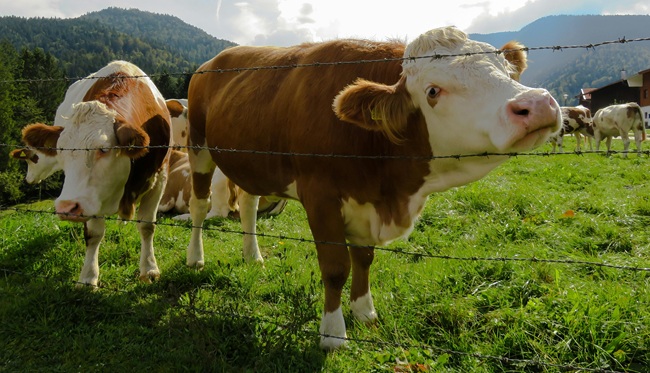
It is very dangerous to restrain or move cattle when all you have is a rope and a tree. Many producers, unfortunately, have only these rudimentary tools available to handle their cattle. Some producers may have better facilities, but they are often grossly inadequate for safe and efficient cattle handling. As a result, deworming, vaccinating, dehorning, castrating, ear tagging, and other herd health practices that can increase farm profitability are neglected.
Adequate facilities not only enable you to perform modern production practices, but they also reduce labor expenses, decrease stress, and prevent injury of both cattle and handlers. There are many excuses for not building new facilities or improving an existing facility. Some think it is too expensive. Others, who are raising cattle as a hobby or for supplemental income, believe they raise so few cattle that improvements will not justify the cost. Still others may not be aware of the benefits of making facility improvements or of the variety of choices available. However, the range of facility options available enable all producers to improve their handling facilities and still be rewarded with benefits that far exceed the initial cost.
Cattle balk when they see a shadow or anything else that creates strong contrasts between light and dark. A fence is one of many types of objects that can cast a shadow across an alley, loading chute or any other area where cattle are being handled. Solid fencing helps reduce shadows that cause balking.
Similarly, drainage grates located in alleys and working chutes produce contrasts that bother cattle. An animal walking down an alley with a grate would balk when it came to the grate. Instead of using drainage grates, slope the floor so water runs into a ditch outside the fence.
Cattle also balk when they move from a bright, sunny area into a dark area – for example, when a handling facility has a roof over the single-file working chute. In this situation, cattle are forced to move simultaneously from a crowded pen into a working chute and from bright sunlight into the dark. Balking can be reduced if the first 10 to 15 feet of the working chute are in sunlight. As a result, cattle are lined up in the chute before they enter the roofed working area.
Another alternative is to leave the facility completely unroofed; however, this makes it more difficult to work cattle in poor weather. You can also roof the entire facility, but this can be quite expensive. When designing a chute or alley, it should be laid out in a north-south rather than east-west orientation. While cattle do not balk when walking directly into the sunlight, it does make them uncomfortable.
Provided by North Carolina State University Cooperative Extension
Related Articles & Free Email Newsletter Sign Up
Do Silage Inoculants Survive the Ensiling Process?
How Milking Equipment Function Can Affect Milk Quality & Production


Comment here